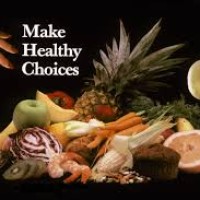
Creating a personalized calorie diet plan cannot be easier.
But, there’s an old saying, “If you fail to plan, you plan to fail.”
You know how we sometimes struggle to put something into action, although we have all the knowledge on How To do it? Well, fear not. Today we are going to draw on the experience of nutritional expert and registered dietitian, Susan Bowerman, to help you create a nationalized calorie meal plan that suits your needs.
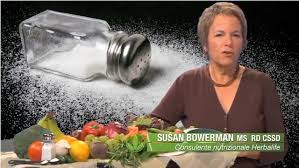 How to create a personalized diet plan ~ Susan Bowerman
How to create a personalized diet plan ~ Susan Bowerman
When you have a sample diet plan laid out for you, it can help you learn proper portions sizes and keep your calorie intake in check.
Patients often ask me to provide them with sample diet plans – these can be especially useful if you’re just starting out and don’t really know what you should be eating, or how much. So this week, I’ve decided to share my sample diet plans with you, too.
We’re going to go through this process step-by-step, so today’s post will give you an overview of the steps you’ll take in creating your own sample diet plan. First, you’ll want to become familiar with portion sizes of the various foods within each food group that will make up your diet plan – that’s today’s lesson. Then, over the next few days, I will post sample 3-day diet plans containing 1200calories, 1500 calories, 1800 calories or 2200 calories per day so you can choose the plan that best suits your needs.
Each plan consists of three meals and at least one snack. That’s why I include one mid-afternoon snack for everyone, with additional snacks at the higher calorie levels.
Creating a diet meal plan step by step
Step 1. Learn what foods to eat at each meal and snack
To keep things simple, I like to break down each meal or snack into simple units – protein, fruit, vegetables, leafy greens, starch/grain, protein snacks, and ‘taste enhancers’. Each diet plan has its own basic structure based on these simple units. That way, it’s easy to remember what you should eat at each meal. Here are the basic structures for the different calorie levels:
1200 Calorie Diet Plan
Breakfast: 1 Protein + 1 Fruit (+ vegetables if desired)
Lunch: 1 Protein + 1 Vegetable + Leafy Greens + 1 Taste Enhancer
Snack: 1 Protein Snack + 1 Fruit or Vegetable
Dinner: 1 Protein + 1 Starch/Grain + 2 Vegetables + Leafy Greens + 1 Taste Enhancer
Snack: 1 Fruit
1500 Calorie Diet Plan
Breakfast: 1 Protein + 1 Fruit (+ vegetables if desired)
Lunch: 1 Protein + 1 Vegetable + Leafy Greens + 1 Starch + 1 Taste Enhancer + 1 Fruit
Snack: 1 Protein Snack + 1 Vegetable
Dinner: 2 Protein + 1 Starch/Grain + 2 Vegetable + Leafy Greens + 1 Taste Enhancer
Snack: 1 Fruit
1800 Calorie Diet Plan
Breakfast: 1 Protein +1 Fruit (+ vegetables if desired)
Snack: 1 Protein Snack
Lunch: 2 Protein + 2 Vegetable + Leafy Greens +1 Starch/Grain + 1 Taste Enhancer + 1 Fruit
Snack: 1 Protein Snack + 1 Fruit or Vegetable
Dinner: 2 Protein + 1 Starch/Grain + 2 Vegetable + Leafy Greens + 1 Taste Enhancer
Snack: 1 Fruit
2200 Calorie Diet Plan
Breakfast: 2 Protein +1 Fruit (+ vegetables if desired) + 1 Starch/Grain
Snack: 1 Protein Snack
Lunch: 2 Protein + 2 Vegetable + Leafy Greens +1 Starch/Grain + 1 Taste Enhancer + 1 Fruit
Snack: 1 Protein Snack + 1 Fruit or Vegetable
Dinner: 2 Protein + 2 Starch/Grain + 2 Vegetable + Leafy Greens + 2 Taste Enhancer
Snack: 1 Fruit
Step 2. Learn your portion sizes
Once you know the basic breakdown of your meal plan, the next step is to get familiar with the portion sizes within each of the food groups. This is one of the most important factors in keeping your calories in check. Each of the following items in each group count as one portion.
PROTEIN – The proteins listed below are low in fat, and are the protein foods you should choose most often. Higher fat meats and dairy products, for instance, will have more calories.
1 protein unit is:
- 1 cup (250g) plain or vanilla nonfat yogurt or nonfat cottage cheese
- 3 ounces (85g) cooked poultry or lean meat
- 4 ounces (100g) cooked fish or shellfish
- 2 scoops Herbalife Formula 1 + 1 cup (250 ml) nonfat or lowfat milk*
- 1 whole egg + 4 egg whites OR 7 egg whites
- 5 ounces (125g) tofu
FRUIT – Fresh or frozen fruits are generally better choices than dried fruits or fruit juices, since you will be getting the largest portion size for the calories you are eating. But I’ve listed fruit portions in various forms so you can choose for yourself.
1 fruit unit is:
- 1 cup (80g) of cut fruit or berries
- 1 average piece of fruit (apple, orange, banana, etc)
- 1 small handful of dried fruit
- ½ cup (125 ml) 100% fruit juice
VEGETABLE – With the exception of starchy vegetables (such as corn and peas, which are listed with the starches) vegetables have the fewest calories per bite of any foods. In fact, the calories in leafy greens such as lettuce are so low, that they can be eaten in any amount.
1 vegetable unit is:
- 1 cup (80g) any vegetable
- Leafy greens – any amount.
STARCH/GRAIN – The foods listed in this group are whole grain – they provide more vitamins, minerals and fiber than refined “white” starches like white rice or white bread. Try to choose whole grains whenever possible.
1 starch/grain unit is:
- ½ cup (150g) cooked grain (rice, pasta, quinoa, etc), beans, lentils, corn kernels or peas
- 1 slice whole grain bread
- ½ large potato, white or sweet
- 1 cup (250g) cooked rolled oats
- 2 corn tortillas
PROTEIN SNACKS – Protein snacks contain fewer calories and less protein than a full portion of protein. These smaller protein “boosts” during the day help to keep hunger at bay.
1 protein snack is:
- 1 Herbalife Protein Snack Bar Deluxe
- 1 ounce (30g) roasted soy nuts
- 1 cup (250 ml) nonfat or lowfat milk
- 4 tablespoons (60g) hummus
- ½ cup (125g) nonfat cottage cheese or flavored yogurt
- 1 ounce (30g) lowfat mozzarella cheese
- ½ cup (85 g) edamame soybeans
TASTE ENHANCERS – Small amounts of fats or sweets can be used to add flavor to your foods, but each of the following items contains 60-75 calories, which is why I limit them in the diet plans. Although avocado is technically a fruit, most of its calories come from fat, so it’s counted as a taste enhancer. Similarly, while nuts do contain modest amounts of protein, most of the calories in nuts also come from fat, so they are placed here.
1 taste enhancer is:
- 2 teaspoons (10 ml) olive, canola, sunflower or safflower oil
- 2 Tablespoons (30g) reduced-calorie salad dressing
- ¼ medium avocado
- small handful of nuts
- ½ ounce (15g) grated Parmesan cheese
- 1 Tablespoon (20g) jam, jelly, honey, syrup, sugar
- 2 Tablespoons (30g) light cream for coffee
- 2 Tablespoons (30g) ketchup
- 2 Tablespoons (30g) low fat sour cream or low fat mayonnaise
FREE FOODS – Some food items have so few calories that they are considered free. Use the following as you wish:
- Mustard
- Vinegar
- Herbs and spices
- Garlic, onion
- Lemon, lime juices
- Salsa, hot pepper sauces, horseradish, Worcestershire sauce
- Extracts (vanilla, peppermint, etc)
- Broth or bouillon
- Soy sauce
- Calorie-free beverages and sweeteners
- Pan sprays for cooking
Step 3. Create your menus
Now that you’re familiar with the portion sizes for the different food groups, it’s time to put the meal plans together. Using the basic structure for the calorie level you choose, you can now “plug in” foods from each of the food groups to create your own diet plan.
Watch for my posts to follow, in which I’ll share my 3-day diet plans for 1200 calories, 1500 calories, 1800 calories and 2200 calories.
Written by Susan Bowerman, MS, RD, CSSD. Susan is a paid consultant for Herbalife.
*2 scoops of Herbalife Formula 1 Nutritional Shake Mix + 1 cup nonfat or lowfat milk counts as a protein choice. When mixed together, it may be used as a meal replacement shake to replace no more than two meals per day.
Related articles in the Calories Series:
- Body Mass Index Calculator – Check Your Health
- Calories – What are calories and how do I burn them?
- How to calculate your daily calorie intake
- Create a personalized calorie diet plan
- Best 1200 calorie diet plan
- Best 1500 calorie diet plan
- Best 1800 calorie diet plan
- Best 2200 calorie diet plan
- How many calories in an egg and all other foods
- Eat calories to lose weight
- Your daily calorie intake – Herbalife UK gets healthy
- Calories burned walking, running, cycling, fishing, chopping wood, dancing and much more.
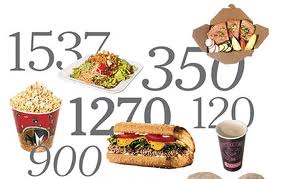 Hate counting calories?
Hate counting calories?
Most people hate counting calories. Everybody knows that a “counting calories diet plan” is not sustainable for long term weight control. People who control their weight with Herbalife do not have to count their calories.
How many calories in an egg? Don’t care. All I have to know is that it’s a protein source. Everybody finds the Herbalife program so easy to use and most people love the taste of the shakes.
To find out more about the Herbalife products and how you can buy at wholesale directly from the company, just click on the Join Now button on the right. It will open up an information page for you where you will see the products in action. You can also just click here now.
Tags: best calorie diet plan, caloric, caloric diet plan, caloric meal plan, caloric meal plans, calorie, calorie diet plan, calorie meal plan, calorie meal plans, calories, diet meal plan, diet meal plans

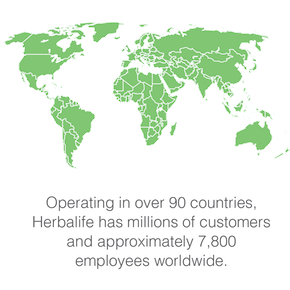
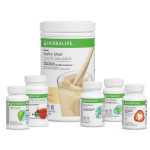


Leave A Reply (No comments so far)